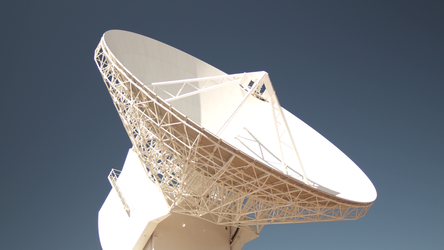Accept all cookies Accept only essential cookies See our Cookie Notice

About ESA
The European Space Agency (ESA) is Europe’s gateway to space. Its mission is to shape the development of Europe’s space capability and ensure that investment in space continues to deliver benefits to the citizens of Europe and the world.
Highlights
ESA - United space in Europe
This is ESA ESA facts Member States & Cooperating States Funding Director General Top management For Member State Delegations European vision European Space Policy ESA & EU Space Councils Responsibility & Sustainability Annual Report Calendar of meetings Corporate newsEstablishments & sites
ESA Headquarters ESA ESTEC ESA ESOC ESA ESRIN ESA EAC ESA ESAC Europe's Spaceport ESA ESEC ESA ECSAT Brussels Office Washington OfficeWorking with ESA
Business with ESA ESA Commercialisation Gateway Law at ESA Careers Cyber resilience at ESA IT at ESA Newsroom Partnerships Merchandising Licence Education Open Space Innovation Platform Integrity and Reporting Administrative Tribunal Health and SafetyMore about ESA
History ESA Historical Archives Exhibitions Publications Art & Culture ESA Merchandise Kids Diversity ESA Brand Centre ESA ChampionsLatest
Space in Member States
Find out more about space activities in our 23 Member States, and understand how ESA works together with their national agencies, institutions and organisations.
Science & Exploration
Exploring our Solar System and unlocking the secrets of the Universe
Go to topicAstronauts
Missions
Juice Euclid Webb Solar Orbiter BepiColombo Gaia ExoMars Cheops Exoplanet missions More missionsActivities
International Space Station Orion service module Gateway Concordia Caves & Pangaea BenefitsLatest
Space Safety
Protecting life and infrastructure on Earth and in orbit
Go to topicAsteroids
Asteroids and Planetary Defence Asteroid danger explained Flyeye telescope: asteroid detection Hera mission: asteroid deflection Near-Earth Object Coordination CentreSpace junk
About space debris Space debris by the numbers Space Environment Report In space refuelling, refurbishing and removingSafety from space
Clean Space ecodesign Zero Debris Technologies Space for Earth Supporting Sustainable DevelopmentLatest
Applications
Using space to benefit citizens and meet future challenges on Earth
Go to topicObserving the Earth
Observing the Earth Future EO Copernicus Meteorology Space for our climate Satellite missionsCommercialisation
ESA Commercialisation Gateway Open Space Innovation Platform Business Incubation ESA Space SolutionsLatest
Enabling & Support
Making space accessible and developing the technologies for the future
Go to topicBuilding missions
Space Engineering and Technology Test centre Laboratories Concurrent Design Facility Preparing for the future Shaping the Future Discovery and Preparation Advanced Concepts TeamSpace transportation
Space Transportation Ariane Vega Space Rider Future space transportation Boost! Europe's Spaceport Launches from Europe's Spaceport from 2012Latest

New Norcia station
Thank you for liking
You have already liked this page, you can only like it once!
Twelve years ago this month, in March 2003, ESA inaugurated a new deep-space ground tracking station 8 km south of the town of New Norcia, which is about 150 km north of Perth, in Western Australia.
The large, 35 m-diameter antenna was completed in 2002, and engineers conducted pointing tests using NASA’s Stardust mission in the lead up to operational readiness. It entered service as the first of the Agency’s three deep-space ground tracking stations in March 2003, and has been used for communications with Mars Express, Rosetta, Venus Express and Gaia, among other ESA and partner agency missions.
The mechanical movable structure weighs 580 tonnes. Engineers can point it with a speed of 1 degree per second in both horizontal and vertical axes. Its control system provides extremely high pointing accuracy under the site’s difficult environmental, wind and temperature conditions.
In 2005 and 2012, ESA inaugurated two more deep-space stations, at Cebreros in Spain and Malargüe in Argentina, providing global, 360° coverage, 24 hours per day.
Like the other two, the New Norcia antenna is one of the largest in the world for spacecraft tracking and control. It is essential for high-performance communications with spacecraft deep in our Solar System and in highly elliptical orbits that take them far from Earth.
The three stations are part of the Agency’s Estrack tracking station network, a worldwide network linking satellites in orbit and ESA’s Space Operations Centre, ESOC, in Darmstadt, Germany.
The essential task of all ESA tracking stations is to communicate with our missions wherever they go, uplinking commands and downlinking scientific data and spacecraft status information. Estrack stations also gather ‘radiometric’ data to help mission controllers know the location, trajectory and velocity of their spacecraft.
In 2015, Estrack celebrates its 40th anniversary, marking four decades since the 1975 decision to start providing tracking services for ESA missions using an antenna at Villafranca, Spain.
More information
-
CREDIT
ESA -
LICENCE
ESA Standard Licence

New Norcia station control room

New Norcia tracking station

New Norcia ground station

New Norcia station















 Germany
Germany
 Austria
Austria
 Belgium
Belgium
 Denmark
Denmark
 Spain
Spain
 Estonia
Estonia
 Finland
Finland
 France
France
 Greece
Greece
 Hungary
Hungary
 Ireland
Ireland
 Italy
Italy
 Luxembourg
Luxembourg
 Norway
Norway
 The Netherlands
The Netherlands
 Poland
Poland
 Portugal
Portugal
 Czechia
Czechia
 Romania
Romania
 United Kingdom
United Kingdom
 Slovenia
Slovenia
 Sweden
Sweden
 Switzerland
Switzerland

























